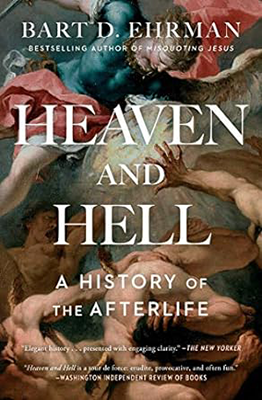Heaven and Hell
“Heaven and Hell: A History of the Afterlife” is a book by Bart D. Ehrman, in which he traces the development of beliefs about the afterlife from ancient civilizations to modern religions. In this comprehensive exploration, Ehrman examines how different cultures and religious traditions have conceptualized the concepts of heaven and hell over thousands of years.
Ehrman begins by examining the beliefs of ancient civilizations, such as the Egyptians, Greeks, and Mesopotamians, and how they viewed the afterlife as a realm of the dead, often with varying degrees of reward and punishment based on one’s actions in life. He then delves into the influence of Zoroastrianism on Jewish and early Christian beliefs, particularly the idea of a final judgment and resurrection of the dead.
The book explores the development of Christian ideas about heaven and hell, from the New Testament era to the Middle Ages and beyond. Ehrman examines how early Christian thinkers, such as Origen and Augustine, shaped theological doctrines regarding the afterlife, including concepts of purgatory, salvation, and damnation.
Ehrman also discusses the role of eschatological beliefs in shaping social and political movements throughout history, including the influence of apocalypticism on religious and secular ideologies. He examines the ways in which beliefs about the afterlife have been used to control behavior, inspire hope, and justify power structures.
Throughout “Heaven and Hell,” Ehrman provides a nuanced analysis of the diversity of beliefs about the afterlife, highlighting the ways in which they have evolved and adapted in response to cultural, social, and theological changes. He challenges readers to critically examine their own beliefs about what happens after death and encourages a deeper understanding of the historical and cultural contexts that have shaped those beliefs.

